Out here on the prairie, trees are relegated to towns, cities and river bottoms. Stand upon a bluff overlooking the Missouri River valley in eastern Nebraska, and the tree color is stunning well into late October and early November. If you squint just hard enough and tip back some warm apple cider, you'd think it was New England. But the prairie is where the true color is at, and not just in the many ornamental grasses like little bluestem (rusty reds) or prairie dropseed (oranges and yellows). No, even the perennial flowers, long done flowering, put on one heck of a show that can easily compete with even the best Vermont has to offer. Here are a few plants that will give you an added dimension every autumn for years to come.
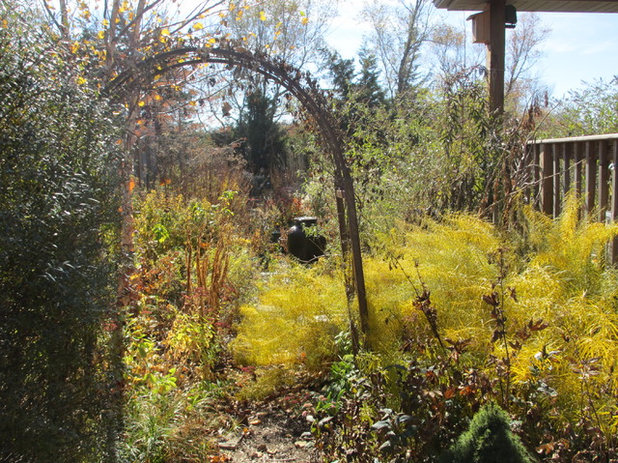
Benjamin Vogt / Monarch Gardens
Perennials that have lovely fall foliage give the landscape a carpet of color that matches the canopy in the trees above. That mix of low color and high color will give you the feeling of being surrounded by a rainbow every fall (or being stuck in a Skittles commercial). The trick for the best color punch may be to mass the perennials, which tend to be smaller in stature, airier and less full than a tree. Take, for example, Hubricht's bluestar (
Amsonia hubrichtii, USDA zones 4 to 9), which when massed produces a cloud of bright yellow, then orange, then finally a rusty brown before defoliating. It is about 3 feet tall and wide, prefers full sun and medium to dry soil, and has bright blue flowers in late spring.
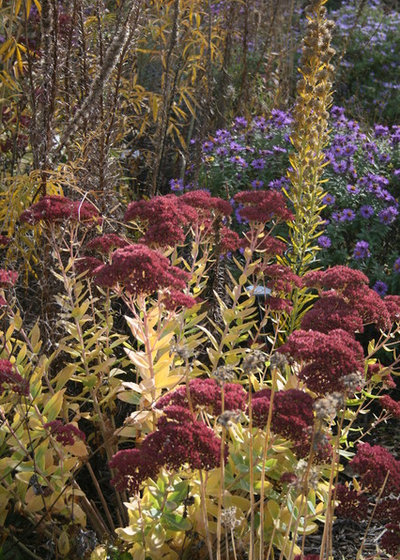
Benjamin Vogt / Monarch Gardens
Sedum is a great fall color perennial, and the cultivar
'Autumn Joy' has reliable golden hues. There are ground cover sedums that get orange and bright red, and since they are a succulent, they're easy to reproduce — just snap off a stem and put it in the soil; in a few years you'll have a nice specimen. Most sedums like dry to medium soil in full to partial sun, and they are a great nectar source for pollinating insects.
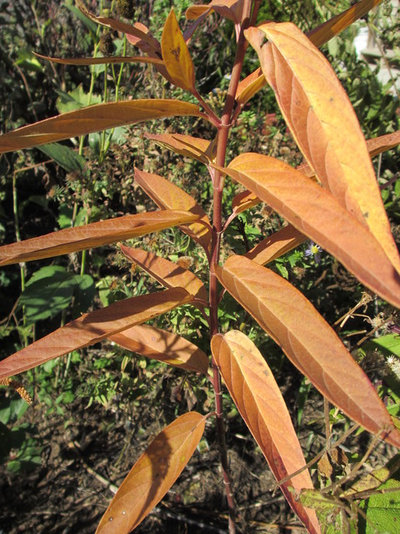
Benjamin Vogt / Monarch Gardens
I'm a big milkweed advocate, because monarch butterflies, struggling with alarmingly low population numbers these last two years, lay their eggs only on milkweed. This is
Asclepias incarnata, swamp milkweed, and it likes full sun in damp to medium soil, growing to 3 feet tall and 1 foot to 2 feet wide. In this image it's bright orange, but last year it was red, orange, yellow and green all at once. As with trees, I'm sure environmental factors such as rainfall and temperature determine the color from year to year.
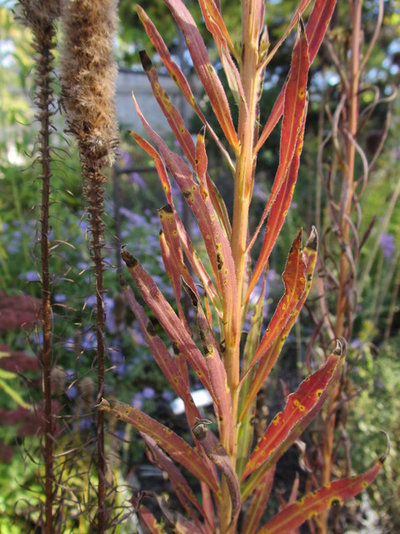
Benjamin Vogt / Monarch Gardens
A favorite nectar plant for butterflies when it's blooming,
Liatris ligulistylis puts on one of the most impressive displays for perennials — wouldn't you agree? It likes full sun in medium to moist soils, reaching 3 to 4 feet tall and 1 foot to 2 feet wide, blooming in mid- to late summer. Other Liatris species also do well with fall color, ranging from umbers and rusts to pure yellows, so you can't go wrong with Liatris.
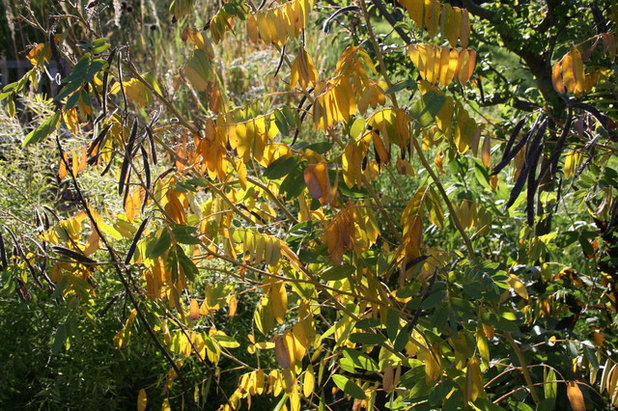
Benjamin Vogt / Monarch Gardens
I’m very into American senna for many reasons.
Senna hebecarpa has a long bloom time in summer, well over a month, attracting many bees and pollinating flies with its yellow flowers. As the seed heads develop, they elongate and become superfuzzy, and in winter rattle in their black slips. But the fall color is darn neat, too, with yellows and oranges glowing in the late-afternoon sun. American senna gets about 4 to 5 feet tall and wide and likes medium to moist soil in full sun. This is one perennial that you don’t need to mass for fall color, due to its shrub-like size.
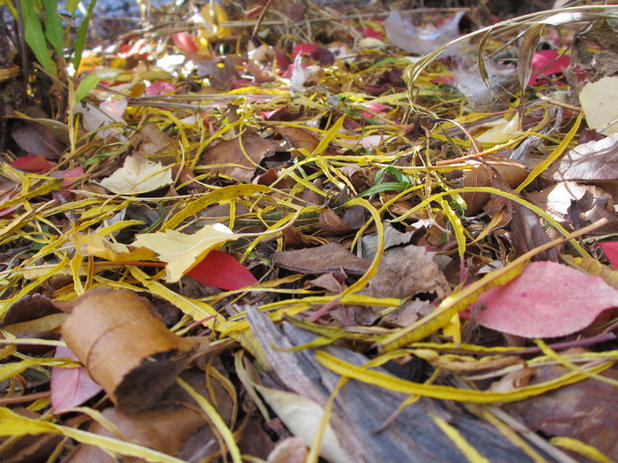
Benjamin Vogt / Monarch Gardens
There are many more flowering perennials out there with awesome fall color, plants such as the ground cover
Prairie Smoke (
Geum triflorum),
which puts on bright reds;
geraniums in rainbows of crayon box colors;
balloon flowers that get as yellow as phone books; even Joe Pye Weed, ironweed and asters will keep on gifting color late into the year after they've gone to seed. Once the leaves drop, don't forget to enjoy the new nutrient-rich carpet draping your garden's floor. I'm telling you, our garden plants can give us way more than just a few weeks of color when they're blooming if we're open to their full three-season potential.
Your turn: What perennials give you some neat fall leaf color?





